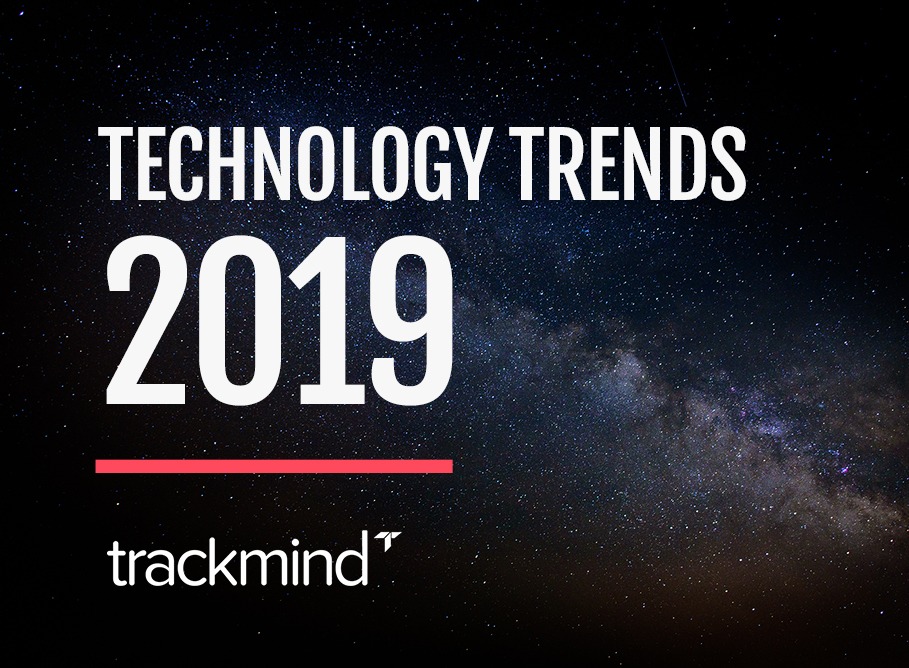Technology Trends Uncovered
When it comes to looking at digital transformation–especially as the world becomes more interconnected thanks to ever-increasing technology–professionals realize that it’s no longer just a technological shift, but an intersectional paradigm shift. In other words, as technology trends improve, so our personal and professional relationships with people and our business lifestyle overall also improves. But what should we, as business professionals, keep our eye out for in the marketplace? Let’s take a look at the top up-and-coming technology trends in digital transformation, innovation, and more in 2019 and beyond.
ChatBots
In an increased quest to not only offer 24/7/365 services but to keep the more “menial” tasks away from the human workers, the chatbot–which is becoming increasingly prevalent in e-commerce–is becoming more popular. Adept at answering basic questions while referring more complex questions to a human worker, the chatbot has evolved in such a way that the language used is much more natural than it was before. According to BSD Zine, thanks to the emergence of natural language programming (NLP), chatbots have become more “human-like” thanks to machine learning. And as a whole, we can expect technology trends like chatbots to grow in 2019 and beyond, especially as the software to deploy the human-like chatbot becomes more affordable.
The Cloud
Today’s workforce has become increasingly mobile and remote, and therefore, the cloud and its accompanying applications are becoming a force that’s not only to be reckoned with, but an essential element of today’s modern workplace. But interesting technology trends are emerging in 2019 and beyond –namely, the emergence of what’s known as the hybrid cloud. Companies are realizing that having one type of cloud doesn’t necessarily work for them, so they’re adopting a cloud that’s a mix of a public cloud, private cloud, and data center. Expect this trend to continue in 2019 and beyond.
Blockchain
Now that, for the most part, people have a general idea of what blockchain does and doesn’t do, its usage will expand into the digital transformation space in 2019 and beyond. While the average “layperson” can’t use blockchain (because, quite frankly, it’s too complicated), the average professional working in the digital space is finding that blockchain is beneficial for transmitting secure data (such as banking information). However, expect a so-called “plug and play” version (that is, one that’s easily used and easily adopted) of blockchain to be deployed in the near future.
The Internet of Things (IoT) and Edge Computing
The Internet of Things has become not just prevalent, but omnipresent. Our devices are all becoming interconnected, even our home appliances are “smart” devices–and as a result, according to Forbes Magazine, we need more space to process more things. This then suggests that “edge computing” will become prevalent in 2019 and beyond. Edge computing is a distributed, open IT architecture featuring decentralized processing power, allowing mobile computing and Internet of Things (IoT) technologies to work properly.
Edge computing allows data to be processed by the device itself or by a local computer or server, rather than being transmitted to a data center. It allows smart applications and devices to respond to data almost instantaneously, as the data is being created, eliminating lag time. This is critical for technologies such as self-driving cars, and has equally important benefits for business.Edge computing also reduces Internet bandwidth usage, eliminating costs and ensuring that applications can be used effectively in remote locations. In addition, the ability to process data without ever putting it into a public cloud adds a useful layer of security for sensitive data. “Going forward, analytics and data won’t just be for processing—they’ll be for processing in real-time. And that’s something only the edge can support right now,” the outlet says.
The Emergence of 5G
Though 5G has been talked about in various technological circles for quite some time, few companies have really put in an effort to making 5G an integral part of their digital portfolio. That, however, is promising to change in 2019 and beyond. Those who are on the Sprint wireless network in the United States, for example, already know that there will be times when the network slips back onto the 3G network, simply because 4G isn’t everywhere. So how can we boldly proclaim that 5G will now be everywhere when some networks don’t even support nationwide 4G? Simply put, according to Forbes Magazine, there are new companies such as the Mimosa Network that are offering fixed 5G services. And, of course, some well-regarded and long-standing mobile companies such as AT&T and Verizon also offer fixed 5G services. In 2019 and beyond, however, we can expect companies to begin to make the shift to mobile 5G services, as well.
Conversational UIs
The emergence of the conversational UI has become the default setting for many enterprise systems. Using both voice and chat, conversational UIs are best seen in such “smart home” devices as the Amazon Alexa and the Google Home. With these consumer UIs, the user can simply speak a command–such as “Alexa, look up a recipe for apple pie!” or “OK, Google, what is the capital of Florida?” and get their desired result. While this is great on a consumer level, enterprise solutions will probably incorporate digital adoption platforms (DAP) that sit atop existing business platforms. According to G2 Crowd, these DAPs will also provide a wide variety of conversational interfaces for employees.
Trackmind creates a customized blend of strategy, design and technology services for each of our clients to help them innovate, grow and delight their customers. We transform ideas into solutions that grow businesses and enhance people’s lives. For more information about us and our services, contact us today to see what we can do for you.
